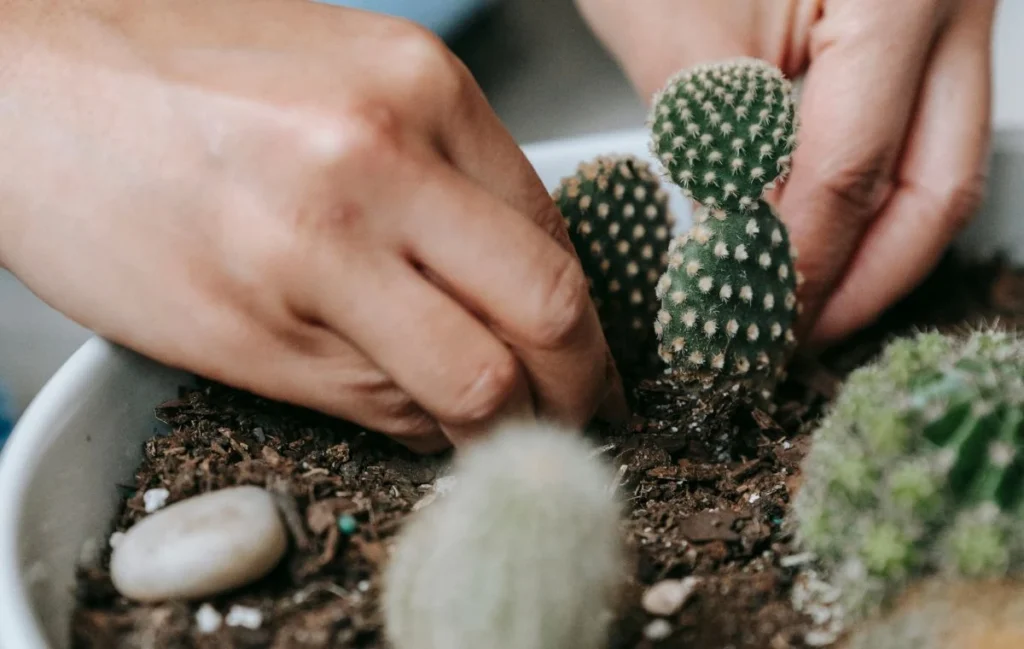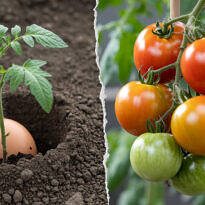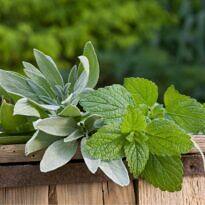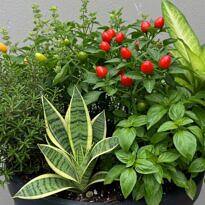If you’ve ever found yourself chatting with your succulents as if they were old friends, offering them an extra “drink” of water on a hot summer day, or placing them in direct sunlight hoping to see them gloriously tan, then, my dear friends, this guide is for you. “Stop Doing This to Your Succulents Today!” promises to be your ultimate pocket guide to unraveling the mysteries of the most common “succulent mistakes” we’re all prone to making. And first off, don’t blame yourself. We are led to believe that plants have needs similar to ours and consequently err with the best of intentions.
But why does human empathy, that quality which makes us so adorably human, fail so tragically when it comes to caring for our succulent plants? Could it be that our succulents don’t appreciate our gestures of affection and pampering? Well, brace yourself for a shock as you discover that treating your succulents with an excess of care and attention is not exactly the approach they expect from you.
We need to face the truth: the world of succulents is as dazzling as it can be complicated. Who would have thought that “less is more” is the definitive mantra when it comes to watering these beauties? Or that “sunbathing” actually means “indirect sunlight” in the language of some succulents? Yes, it’s a world of contradictions.
And here we wonder: do my succulents really appreciate being moved to that sunny corner of the house, where the sun hits hardest? Do they truly desire that extra cup of water that I insist on giving at the height of summer, thinking I’m doing a good deed? The short answer: probably not. The long answer: it’s all a big “depends” and…
So, get ready to explore the most common misconceptions in succulent care. Because, in the end, we all want our succulents to thrive and look beautiful and plump, even if that means admitting our faults and learning from them. Are your succulents ready to see you transform into the plant caregiver you’ve always dreamed of being? Let’s find out together!
#Mistake 1: Watering Rules
Ah, watering succulents. Seems simple, right? You grab your watering can, say good morning to your little plants and… wait, is that it? If you thought watering succulents was as easy as following a schedule, like watering every Tuesday while listening to your favorite podcast, think again. Let’s unravel the mystery of why regularity can be more of a trap than a help for your beloved succulents.

Why can regularity be a problem?
Did you know that succulents are the masters of survival? They store water in their fleshy leaves, preparing to face long periods of drought. This means they don’t need to be watered as frequently as you water your ferns and orchids. But here comes the crucial question:
If I shouldn’t water my succulents regularly, then how do I know when to water them?
The answer is simple, but requires a bit of observation and adjustment. The water needs of succulents vary throughout the year. During the growing months, your succulents may need a bit more water, while during dormancy periods (which can be in winter or summer!), they enter a hibernation mode, where overwatering can be fatal.
The harms of overwatering
Overwatering your succulents is like offering a free buffet when in fact they’re always on a diet. Yes, the intention is good, but the consequences? Not so much. Overwatering can lead to root rot, a treacherous condition that can send your succulents to the great plant heaven prematurely. But how do you know if you’re overwatering?
That’s the thing, you might not know… because by the time the problem appears, such as fallen leaves, for example, it might already be too late. But don’t panic. The little secret lies in letting the potting mix dry out well between each watering. Use your finger, a stick in the potting mix, or even lift the pot to see if it’s light. If it’s dry, you can give your dose of love and care in the form of water. If the potting mix is still moist, wait a bit longer.
And the harms of underwatering?
On the other hand, underwatering your succulents is like forgetting to feed your pet – and, as our friends are slow to show signs, when the leaves are wilted, dry, or wrinkled they are probably already suffering what we can call “water stress”. The signs that not everyone notices and that may not be so obvious, is that our succulents do not develop. They become stunted, with signs of stress (colored), do not emit flowers or new shoots. We have the feeling that they are always in dormancy.
So, what’s the secret?
The secret is to observe and adjust. Before watering, ask yourself these questions: Is the soil completely dry? How are my succulents developing? Are they in a dormancy or growth period? Is it winter or summer? Adapting your watering to the current needs of your succulents, rather than following a fixed schedule, is the path to success. Remember, when in doubt, it’s better to err on the side of too little than too much. After all, it’s easier to give a little more water than to try to resurrect a drowned succulent.
#Mistake 2: Lack or Excess of Light
Sunlight – that eternal source of life, the glow that guides our succulents on their path to fullness. But, wait a minute! Are we assuming that all succulents want to spend their days roasting in the sun? If you thought “yes”, prepare for a slight course correction in your gardening journey.
The Myth of the Scorching Desert
Here’s a truth: not all succulents come from scorching deserts. That’s right, these rugged and adorable creatures can be found in a variety of environments, from high mountains to humid forests. So, what does this mean for their light needs? Simple: there’s no one-size-fits-all rule.
Some succulents love a good dose of direct sunlight, while others prefer partial shade, enjoying light in a more moderate manner. Placing a shade-loving succulent under scorching sun can be as cruel as forcing a vampire to spend the day at the beach – it won’t end well. Moreover, always consider the climate of your region. A succulent that spends the day in the sun in the southern part of the country, can burn in an hour or less if exposed to the sun in the north or northeast. Light intensity varies according to latitude and longitude, and we must consider this when listening to tips from influencers and YouTubers out there.

The harms of sudden changes in light exposure
Imagine you’ve spent a long time adapting to low light conditions and suddenly you’re ripped from your comfortable couch and placed directly in the middle of the Sahara at noon (and without sunscreen!). Shocking, right? The same applies to succulents. Sudden changes in light, especially from shade to full sun (even if you’ve just discovered that the species you have there is a full sun species), can be stressful and very damaging. These abrupt transitions can cause irreversible sunburn on the leaves.
To avoid these problems, always make gradual changes, respecting the species you cultivate. Start with an hour more of sun per week, and increase the number of hours each week. Thus, your plants can adapt their photosynthesis mechanism while producing anthocyanins that protect them from the strongest rays of the sun.
How to avoid etiolation
Have you ever seen a succulent that seems to be stretching towards the light, losing its compact shape, as if trying to capture the last rays of the sunset? This is etiolation, a sign that your plant is not receiving enough light. To prevent your succulents from turning into plant versions of Stretch Armstrong, here’s a tip: observe the light your succulents receive and adjust as necessary.
A happy succulent is one that receives the right amount of light, no more, no less, and maintains its compact and plump shape while growing, becoming increasingly beautiful. Do not confuse with succulents that become leggy by losing the lower leaves but maintain compact rosettes at the tips of the branches. This is normal and happens with various species.
So, before placing your succulents in that sunny spot, ask yourself: “Is this really the best light for you, little plant?” Remember, knowing the specific light needs of your succulents is the secret to keeping them healthy and happy. Adjust light exposure gradually, and you’ll see your succulents thrive, without dramas of sunburns or etiolation spectacles.

#Mistake 3: Fertilizing as if There Were No Tomorrow
When it comes to nourishing our dear succulents, some of us might get carried away, thinking: “If a little is good, a lot must be better, right?” Wrong! Let’s dive into the delicate art of fertilizing succulents and discover why treating your little plants as if they were in an eternal buffet of fertilizer might not be the best idea.
The Gourmet Mistake: Too Much Fertilizer
Imagine yourself at an all-you-can-eat buffet, where you eat so much you can barely move. Now, imagine your succulents in the same situation, but with fertilizer. Sounds good? Probably not. Excessive fertilization can lead to a series of problems, such as overly rapid growth, resulting in weak and etiolated plants. Moreover, a feast of nutrients can cause a buildup of salts in the soil, which harms plant physiology, reducing their ability to absorb water, for example.
The vast majority of plants don’t know when they will be able to eat again, so they have a tendency to absorb everything that appears for later use. But this excess of nutrients causes a serious imbalance in their organisms. Exaggerated growth, and sap rich in nitrogen, for instance, can be an invitation for mealybugs and aphids. If the fertilization is organic, even worse, because then the full plate will be for rot caused by fungi, bacteria, and the dreaded fungus gnats, which until then should be a problem only for indoor plants, like anthuriums and aglaonemas.
The extreme diet: Not fertilizing

Now, let’s talk about the other extreme: not fertilizing. If on one hand, an excess of nutrients is a problem, the complete absence of them is like expecting your succulents to thrive on a diet of air, water, and good vibes. And believe it, this mistake is more common than one might think. Many people believe that feeding the plant is just putting a “good soil”. But without fertilizer, your succulents will depend only on the few nutrients that come from water and the potting mix and may develop stunted growth, pale leaves, and a general lack of vigor.
So if you want your succulents plump, colorful, and multiplying, seriously consider a good and balanced fertilization.
Finding the Balance
But what’s the secret to proper nutrition for your succulents? Moderation and attention to the specific needs of your plants. Think of fertilizer as a seasoning: a little can enhance the flavor, but too much can ruin the dish. A good general rule is to fertilize your succulents with a balanced fertilizer suitable for cacti and succulents, during the growing season, and then give them a rest during dormancy.
#Mistake 4: Insufficient Drainage:
Many people believe that the biggest secret to succulent care lies in watering – a big mistake. Drainage comes first, as it is fundamental for the root environment to be healthy, which is the basis for everything else. So, let’s unravel the mysteries and misunderstandings around “Insufficient Drainage” and why ensuring adequate drainage is crucial for the health of your succulents.
The Substrate Disaster
First, let’s talk about the potting mix. Choosing a potting mix with a high water retention capacity for your succulents is like buying high heels to run a marathon: it simply doesn’t make sense. Potting mixes that retain water for too long can cause your succulents’ roots to become so saturated that they simply can’t breathe and literally die drowned. And believe me, roots need not only water and potting mix, they need air to circulate so they can breathe. But talking about “potting mixes” is not always easy to understand.
To better understand this issue, think that although soil always seems the same, each one is different when we think about the spaces between the particles. A clay soil will have very little space because each grain of clay is very small, and they stick together. Water fills the remaining spaces, leaving nothing for air to circulate. On the other hand, a potting mix with coconut husks, pieces of bark, stones, is all chunky. Water passes freely, and there’s plenty of space for air to circulate.

Our succulent friends like well-aerated potting mixes with perfect drainage. That is, those that have almost no common garden soil, with large particles like coarse sand, vermiculite, perlite, coconut husks, pine bark chips, fibers. Some potting mix producers even take care to sift the mix so that there are no fine dust particles that can clog these pores and prevent air circulation.
And did you know that the size of the pot is related to this issue? Putting a small succulent in a large pot, which takes a long time to dry all the potting mix, causes the same kind of problem. For this reason, always choose pots proportional to your plants. Don’t be fooled into thinking that if you give it a larger pot it will grow faster and occupy the space.
But how do you know if your potting mix is the villain of the story? If after watering, the water takes forever to dry, or if the soil seems very moist, it’s because something is very wrong. Regional differences should also be taken into account. In the humid winter of the south, well-drained potting mix is more important than in the heat of the northeast, where the pot dries quickly, regardless of the potting mix. Think about this when composing your potting mix for pots.
The tragedy of pots without holes
Now, let’s talk about pots. Pots without drainage holes might not dirty the beautiful stone countertop, but they are also a trap for your succulents. This situation can lead to an accumulation of water and salts at the bottom of the pot, creating a perfect environment for the development of fungi and root rot. If your succulents could start sending SOS signals, they would probably ask for a pot with adequate drainage.
And if you’re wondering, “But what if I use a pot without holes for aesthetic reasons?” Well, think of it as choosing beauty over comfort. It may look good for a while, but eventually, you (or your succulents) will pay the price. Temporary arrangements are valid, but consider not leaving your succulents there for long, making swaps every 6 months at most.
For the same reasons, avoid the saucer under the pots of succulents. They will have the same effect as a pot without holes, pooling water and reducing breathing.
If the pot bought from the Garden Center has tiny holes or few, don’t think twice and increase their size and number. Use a drill on ceramic pots or a soldering iron on plastic pots, and only then make them the home of your succulents.
The annual repotting rite of passage
Last but definitely not least, let’s talk about annual repotting. Many people don’t know this, but over time, even the best potting mix where your succulents reside will compact, reducing aeration and preventing adequate drainage. Repotting your succulents annually is not just an opportunity to give them a better place to live; it’s a necessity to keep the soil fresh and breathable.
So, how do you know if it’s time to repot? Don’t wait for problems to occur to make the switch. Put annual spring repotting on your calendar. This way, you do the work once, saving time and money. Take the opportunity to refurbish your pots and plants (see the article on beheading).
Before putting your succulent in a pot without drainage or choosing a potting mix worthy of a sponge, ask yourself: “Am I creating an environment where my succulents can truly thrive?” Remember, succulents love perfect drainage. Ensuring that your succulents have the right environment for their roots to breathe, lightly moist but without pooled water, is the secret to keeping them happy, healthy, and most importantly, alive.

Caring for succulents is not complicated, but it requires attention to specific details that differ from the care of other plants. By avoiding these common mistakes and following the suggested solutions, your succulents will not only survive but thrive, filling your space with sculptural shapes and fascinating colors. Cultivating succulents is a rewarding journey that rewards patience and careful observation with spectacular results.
Let’s correct these four little mistakes today, shall we?







